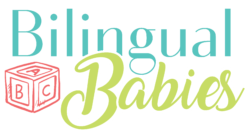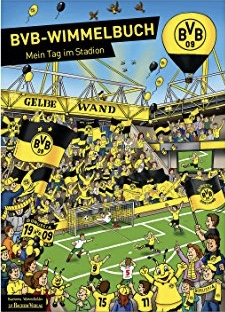When I opened my emails a few weeks ago, I saw an email from an old friend. She wrote that she was in the process of setting up a German playgroup for their mainly French-speaking children in Switzerland. She asked if I had some ideas for group activities they could do with their 3-5 year olds.
Here is what I came up with based on experiences with birthday parties as a kid in the 80s and more recent observations in Ella’s music group classes at the German school in Morristown, NJ.
But before listing some ideas, I think it’s important to keep in mind four key principles:
- Keep it fun!
- Immerse them in the target language (here: German)!
- Provide interaction!
- Combine language with fun physical activities!
I. Bewegungslieder—Lieder zum Mitsingen und Bewegen
-
- Traditional Kinderlieder have repetitions, rhymes, minimal pairs, as well as typical intonation and speech patterns of the German language.
- Oftentimes the lyrics ask for certain actions—simply follow the lyrics and engage in dancing or otherwise moving along! Also try to use percussion instruments with it like tambourines or rattles.
Examples:
Grün, grün, grün sind alle meine Kleider
Interactive ideas:
Use colored juggling cloths (see here). Put a red cloth over each kid’s head when singing about red (“rot, rot, rot sind alle mine Kleider”), put a green one over each kid’s head when you sing about green (grün, grün, grün sind alle meine Kleider…”) and so on. So they basically see the world in the colors that they sing about.
Kopf, Schulter, Knie und Fuss
Interactive ideas:
Touch the body parts as you sing each stanza.
Brüderchen komm’ tanz mit mir
Interactive ideas:
Take your kid by the hands and dance from one foot to the other or spin around —-just like the song says.
Hoppe, hoppe, Reiter
Interactive ideas:
This is a lap rhyme where you put your kid on your lap and pretend she is riding a horse. While singing it, bounce your kid on your knees up and down following the rhyme. Then on the last line of each verse (“macht der Reiter plumps!”), gently lean the child back towards the floor pretending to fall.
Hände waschen
Interactive ideas:
Have the kids mimic the actions in the song (washing hands, shaking them dry etc.)
Grosse Uhren machen tick tack
Interactive ideas:
Alternatively to having the kids do the movement like in the video, you can also lift up your kid and swing her from left to right like a clock’s pendulum. Increase the swinging speed in line with the lyrics. In the last part when the pocket watches go really fast, you can gently shake or tickle your child.
Links for more songs:
II. Reading together
Reading is one of the most important activities to develop a kid’s language abilities. Click here to learn why.
The types of books that you can use depend on the age of the kids. In general though, I tend to use books for Ella (2 years old) that have good illustrations. Also, Wimmelbücher are a type of book that tends to work well as a conversation starter. As a native of Dortmund, Germany, here is one of our favorite „Wimmel“-Bilderbücher:
Look for Emma, the BVB mascot! And while you are at it, discover many more things that are very typical for Dortmund’s soccer culture!
The good thing about a Wimmelbuch is that you get to provide the language. So you can talk about the pictures. You can adapt the level of difficulty when interacting with your child. You can describe what you see to your child. You can ask questions such as “Do you see the balloon?”, “Where is the balloon?”, “What is this?” or “What is the horse doing?”—yes there is a horse around the soccer stadium in real life each time Dortmund’s team plays! So the book provides a glimpse into Germany’s Ruhrpott and soccer culture! To find more traditional German Wimmelbücher click here!
Here are some things you can do while reading:
-
- Sit in a circle to show the pictures while you read.
- Read in an engaging, animated way.
- Ask questions and use the story to engage them in conversations:
- Ask them questions about things in the story or in the pictures.
- Ask them how characters probably feel.
- Have them guess what happens next.
III. Bake or prepare a meal together
Just a simple hands-on activity that allows you to engage the kids in conversation. They can playfully learn the ingredients and what to do with them while engaging in a “team project”.
IV. Games
- Fischer, Fischer wie tief ist das Wasser?
- Ich sehe was, was du nicht siehst
- Dreh dich nicht um, denn der Plumpssack geht herum


